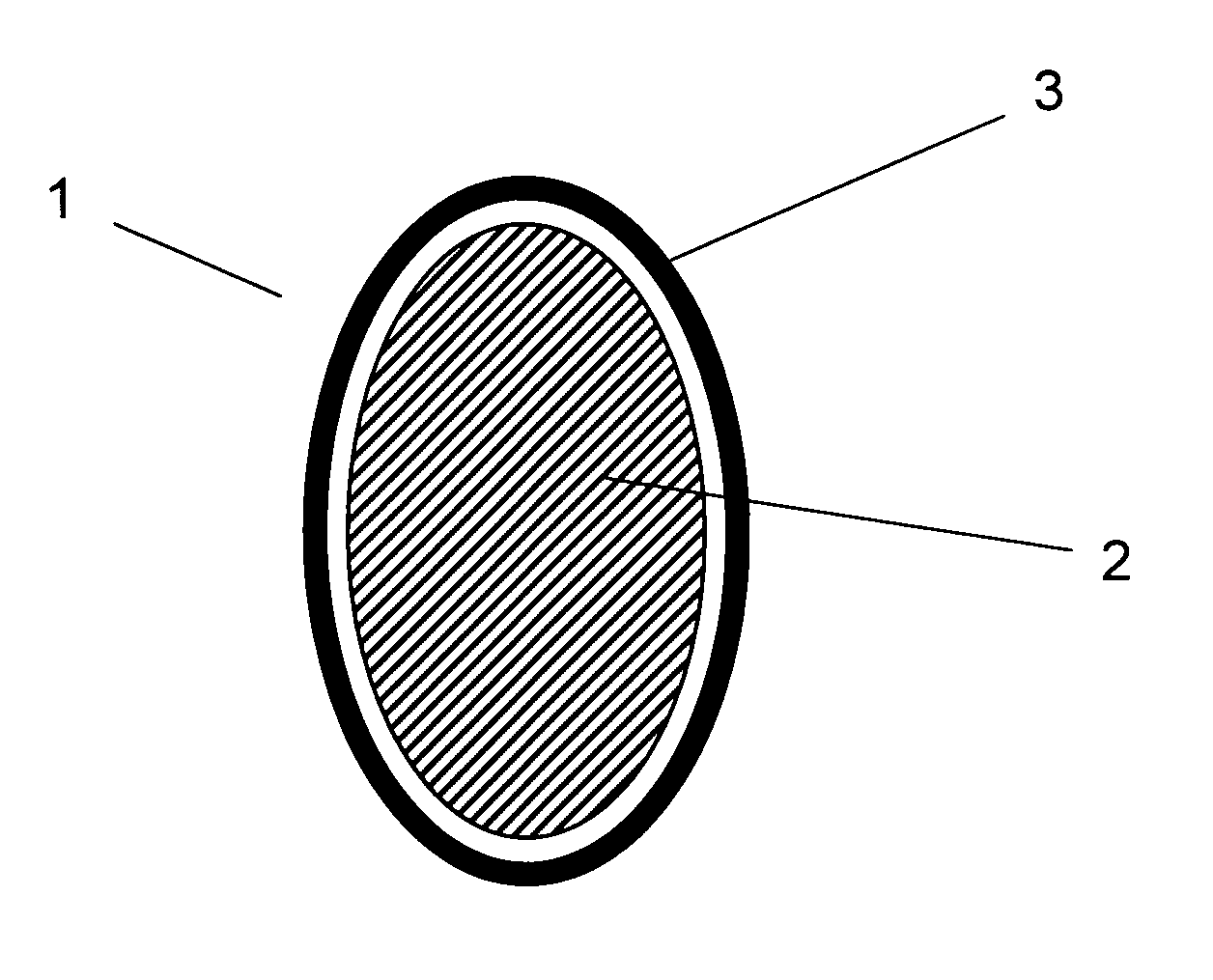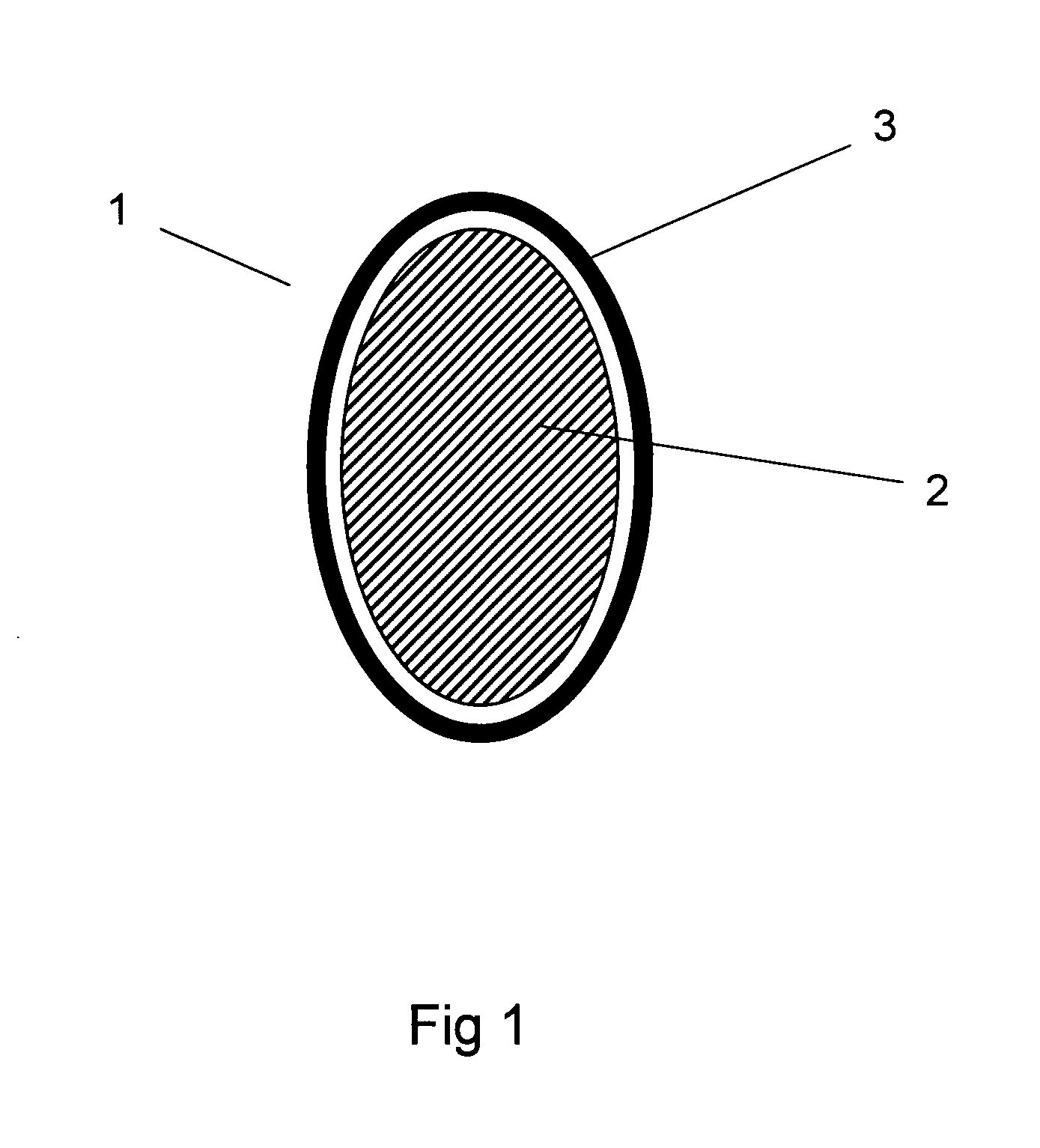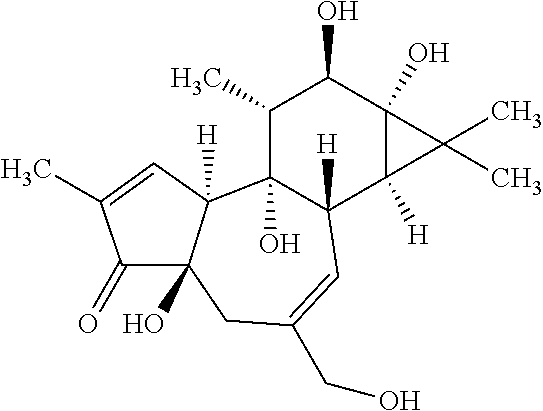Methods for detoxifying oil seed crops
a technology of oil seed crops and methods, which is applied in the direction of fatty oil/fat production, fatty oil/fat refining, animal feeding stuff, etc., can solve the problems of unable to find use for by-products, unable to demonstrate the detoxification of i>jatropha /i>kernels to acceptable levels, and largely unsuccessful
- Summary
- Abstract
- Description
- Claims
- Application Information
AI Technical Summary
Benefits of technology
Problems solved by technology
Method used
Image
Examples
example 1
The Use of Hexane Alone (i.e. without Expelling of Oil) was Investigated
[0123]A small scale continuous extraction (4 hr) with a solvent / mass ratio of 500 / 1 was carried out at the boiling point of the solvent and oil was recovered from the solvent by evaporation of hexane under vacuum. The defatted meal was extracted with methanol for 1 hour and PEs were analysed after evaporation of solvent, by HPLC. Hexane was effective at removing almost all oil from the kernel (50-57% of kernel weight), yielding a meal with an oil content of less than 5% by weight, but was not effective at removing all PEs from the meal. Residual PE was 200-300 ppm kernel.
example 2
The Use of Methanol Alone to Extract Oil and PEs from Kernel was Investigated
[0124]A small scale continuous extraction (2 hr) with a solvent / mass ratio of 200 / 1 was carried out at the boiling point of the solvent and oil was recovered from the solvent by evaporation of methanol under vacuum. The resulting meal was re-extracted with methanol for 1 hour and PEs were analysed after evaporation of solvent, by HPLC. Methanol removed only 37% kernel weight of oil from the kernel, yielding a meal with an oil content of more than 17% by weight, but was effective at removing all PEs from the meal. No PEs were detectable in the resulting meal.
example 3
The Use of Ethyl Acetate Alone to Extract Oil and PEs from Kernel was Investigated
[0125]A small scale continuous extraction (2 hr) with a solvent / mass ratio of 200 / 1 was carried out at the boiling point of the solvent and oil was recovered from the solvent by evaporation of ethyl acetate under vacuum. The resulting meal was re-extracted with methanol for 1 hour and PEs were analysed after evaporation of solvent, by HPLC. Ethyl acetate removed almost all oil (54% kernel weight) from the kernel, yielding a meal with an oil content of less than 2% by weight, but was not effective at removing all PEs from the meal. The resulting meal contained 268 ppm PE of kernel.
PUM
 Login to View More
Login to View More Abstract
Description
Claims
Application Information
 Login to View More
Login to View More - R&D
- Intellectual Property
- Life Sciences
- Materials
- Tech Scout
- Unparalleled Data Quality
- Higher Quality Content
- 60% Fewer Hallucinations
Browse by: Latest US Patents, China's latest patents, Technical Efficacy Thesaurus, Application Domain, Technology Topic, Popular Technical Reports.
© 2025 PatSnap. All rights reserved.Legal|Privacy policy|Modern Slavery Act Transparency Statement|Sitemap|About US| Contact US: help@patsnap.com



